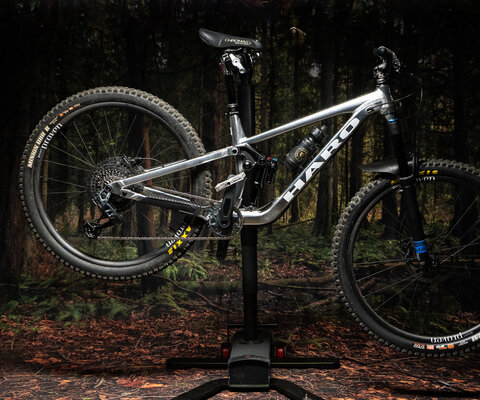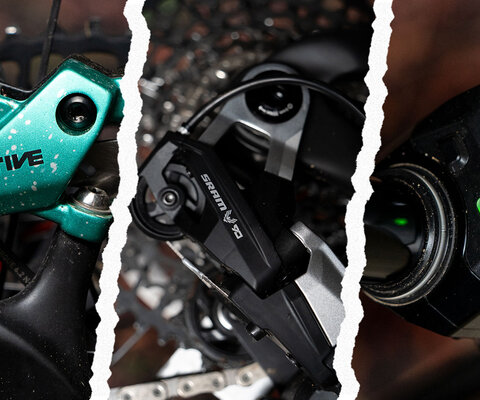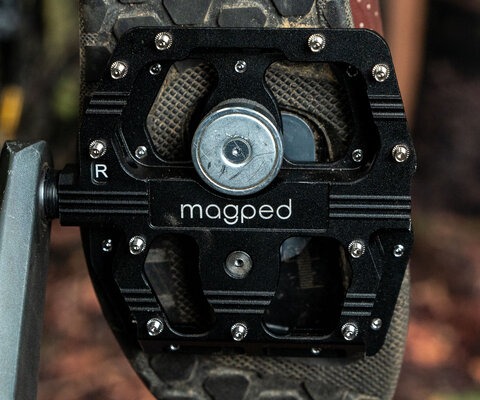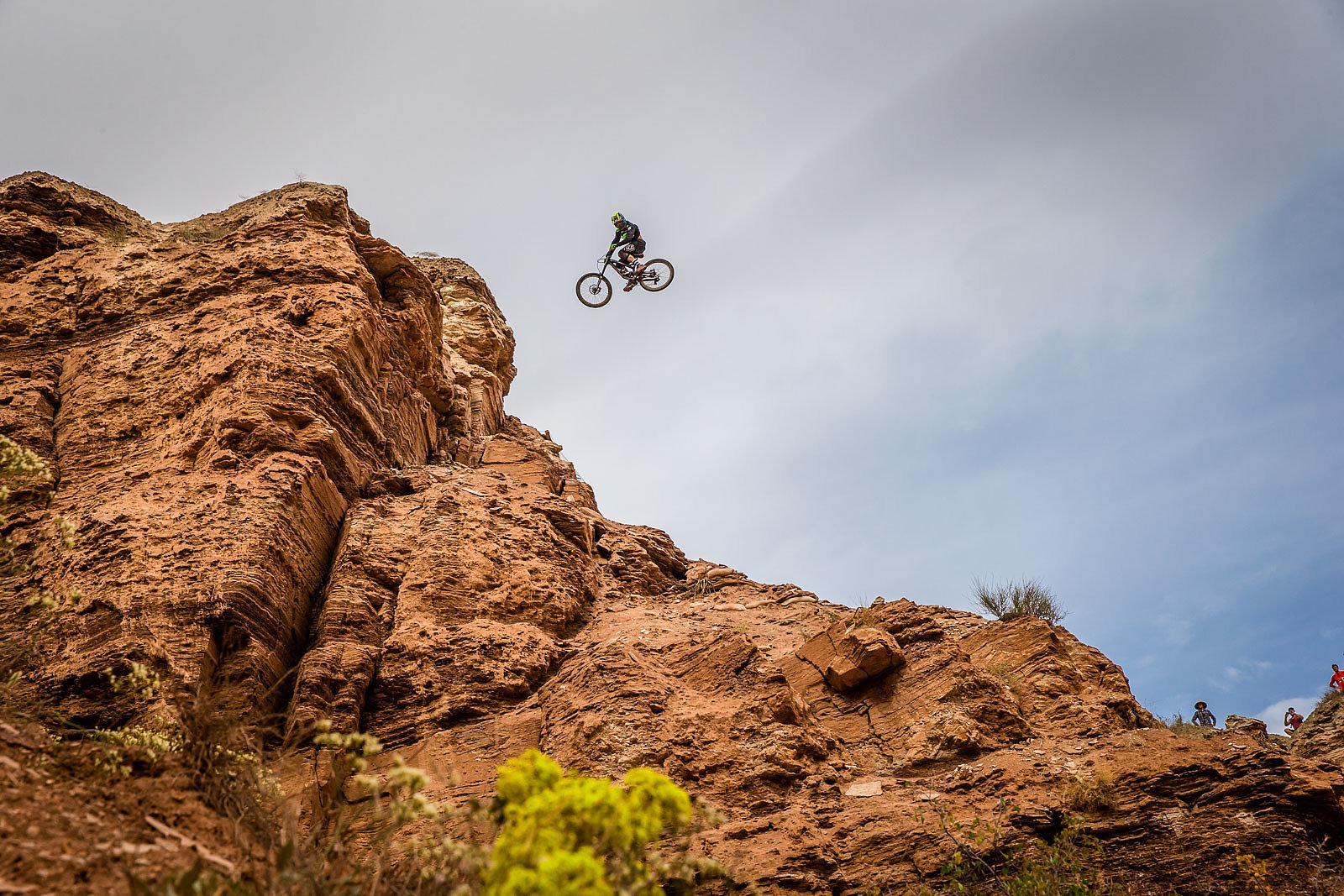
Reach For The Sky Movie Review
It’s no secret that Cam Zink has been pushing freestyle mountain biking to new levels for the past decade,
but what always seems to be forgotten with legends and pioneers is there’s so much more than podiums and world records. These might be some of the driving factors for Cam, but it’s the moments in between—be it a doctor’s office or cruising around in a 1959 Cadillac Coupe de Ville—that give a much better sense of the person he is. Reach for the Sky is a documentary that tags along with Cam for a year, encompassing both the 2013 and 2014 Red Bull Rampages and his world record backflip at Mammoth Mountain in California, not to mention other monumental milestones like the birth of his daughter.
The film intertwines home videos of a young Cam riding his bike, and gives pretty much a full-on history lesson of his formative years and riding career. This is one of the things that the film does best, showing how Cam grew up to be the person that he is. From a little sibling rivalry with his older brother Howie to bringing freestyle into BMX races in the 90s and partying in Reno, it’s pure evidence that it is his nature to push boundaries.
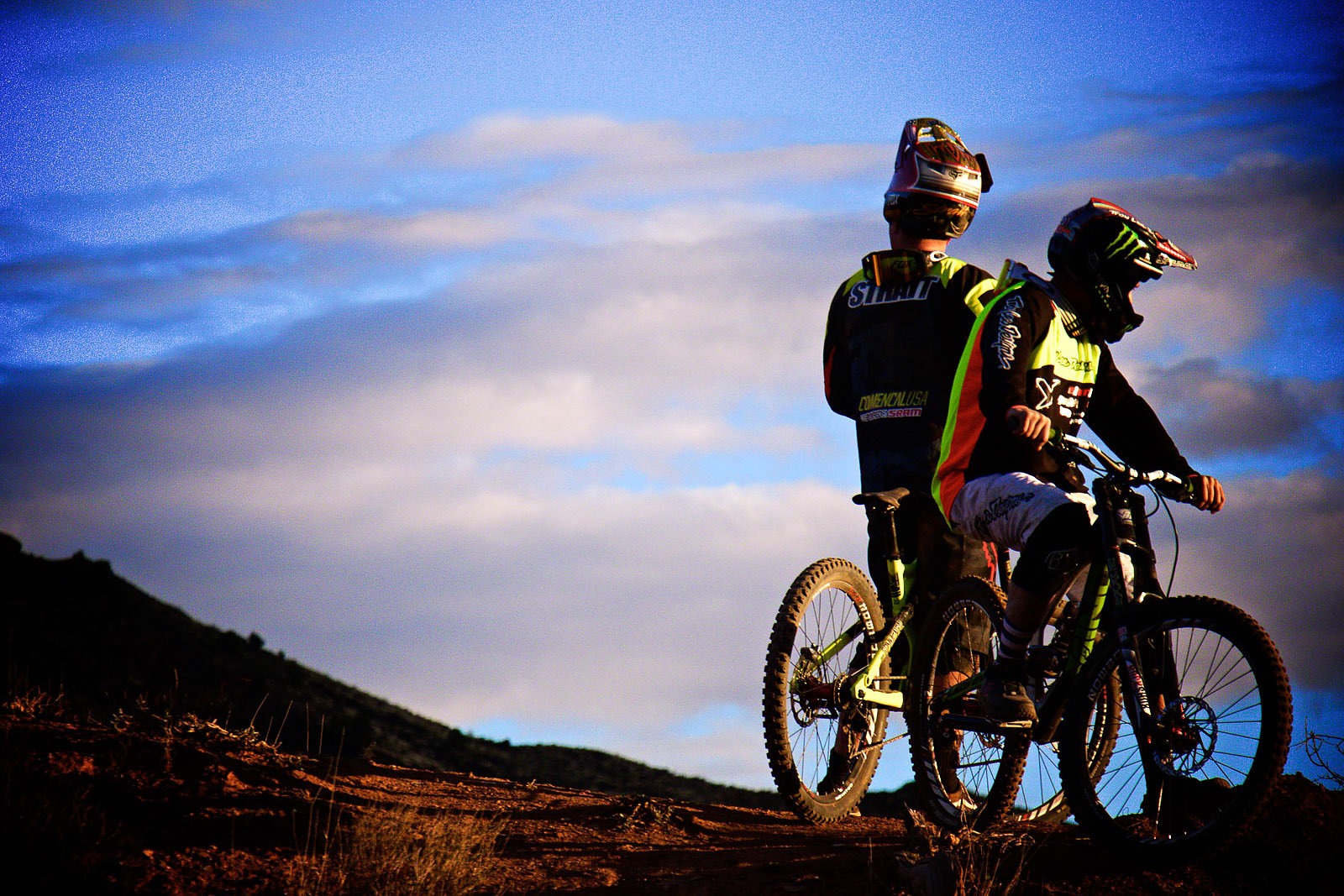
Perhaps one of the coolest aspects of the whole movie is the number of legends that make an appearance. People like Kirt Voreis, Travis Pastrana, Eric Carter, Cam McCaul, Shaun Palmer and too many others to list talk on Cam’s role within the sport’s progression. Both Kirt and Eric voice their apprehensions with mountain biking’s most notorious event: Red Bull Rampage. With the film both opening and closing with the event, it’s a large part of the movie, and of Cam’s career. It’s interesting to hear how Cam thinks about the event differently than almost everyone else. His drive and confidence make it apparent that in his mind he’s making calculated decisions not leaps of faith. And it’s not any ones right to deny him of that.
What’s unique about Reach for the Sky is the raw, real life emotion it conveys; the stress and the suspense is intense at times. Even if it’s already happened and you know the outcome, director Ryan Cleek brings you into the action on a very personal level. The passion that was put into this film—on behalf of both Ryan and Cam—is refreshing to see. A few sponsors like Oakley and Diety have been on board since the beginning, but many others didn't join until afterwards, making for a pretty slim budget for such a production. Ryan even spent a whole year working on the movie while he still had a full time job, before turning his sole focus to Reach for the Sky in 2014. This kind of perseverance pays off, and Reach for the Sky a fully succeeded in giving a very unique and personal look into the life of one of mountain biking's biggest legends.
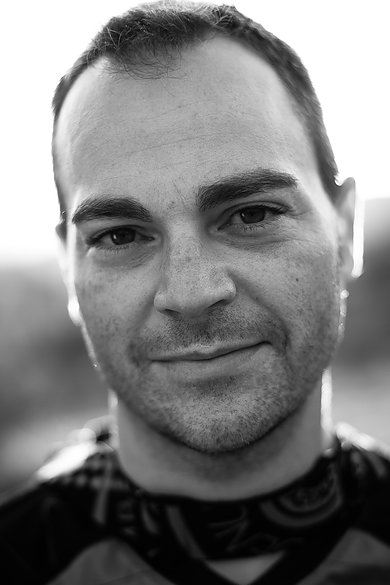
Reach for the Sky's writer, producer, director and editor Ryan Cleek. | Photo: Jake Orness
We caught up with Ryan to get a little more insight on his role as writer/producer/director/editor and what it took to make this movie come to life.

Tell us a little bit about yourself...
I’m 38 years old, from Santa Monica, California, and currently live in Santa Cruz. I studied journalism at Butler University, and have raced bikes since I was five years old. For 10 years, I was a staff writer and photographer at Mountain Bike Action, before working as a Creative Content Producer for Specialized in Morgan Hill, California. I left there in late 2014 to focus on finishing the Zink project, which at that time I had been shooting on my weekends and vacation days for over a year.
What’s your background in filmmaking?
“Reach For The Sky” is my second feature length film. My first one, Downhill Speed, I started when I was 25 years old and while working full-time at a magazine. It was released on DVD in late 2005. Back then, I could only afford to make 2000 DVDS, so that movie didn’t exactly get much exposure or attention, yet was well received by those who did happen to catch it. (I recently loaded the full movie on YouTube, so it can live on in all of its standard-definition glory.) “Downhill Speed” followed Eric Carter, Johnny Waddell, and Orlando Martinez, in and out through the 2003 season of National and World Cup Downhill racing. The idea being each of these guys at different stages in their careers and very different personalities, would’ve never been in the same room together if it weren’t for bike racing.
Although certainly dated now, I’m still proud of that movie—especially making a full-length feature with a $0 budget. That would not have been possible were it not for my friends Brian Read, Derek Hoffman, and Veronica Blum, who helped me shoot it on whatever equipment we could borrow. Between that movie and the Zink project, I was involved with other magazine and media projects, but was always looking for the right story for my next feature project. For me to take on so much financial risk and pressure I really have to believe in the story.

What was your relationship with Cam before the movie?
I’ve known Cam since he was probably 17 years old, when he was riding in the Superheros videos back in the early 2000s. The guy behind those videos, Neil Sanders, was a good friend and was always telling me about this Zink kid from Reno who kills it on all of the bikes. I’d tag along on those Superheros video shoots and take photos for the magazine. At that time, I could tell Cam was unique, because he was a junior national champion racer, but also really strong riding street and dirt jumps.
Fast forward a couple of years— I’m still working at the magazine and Cam is on the Santa Cruz Syndicate as a junior racer and will also enter the burgeoning freeride and slopestyle events. Not long into this year he suffered a torn ACL. After going through that experience four times myself (twice each knee), he and I talked a long time about what he’d be going through and what was ahead of him. The root of the conversation was about not giving up and persevering through these injuries. At the time we didn’t know Cam would then go on to ultimately have four ACL reconstructions as well. Those moments sparked our friendship and gave me a genuine interest in seeing how his career would continue. It’s no coincidence major themes of the movie deal with persevering through injuries and the tough times to reach his goals.
How did that change throughout the production?
The biggest change simply in the frequency of our interactions. Instead of seeing each other a handful of times a year, sometimes we were together several times a month for two years. When we were shooting interviews or for background information at his home in Reno I tried to keep it efficient and business oriented, because I had to be economic with both my time and money, and could afford to reshoot things or not get the most content from each of our interview sessions. Cam trusted me to tell his story, so I did my best to keep the “business” moments about the movie, but overall, we’re certainly closer now than we were before the movie happened.
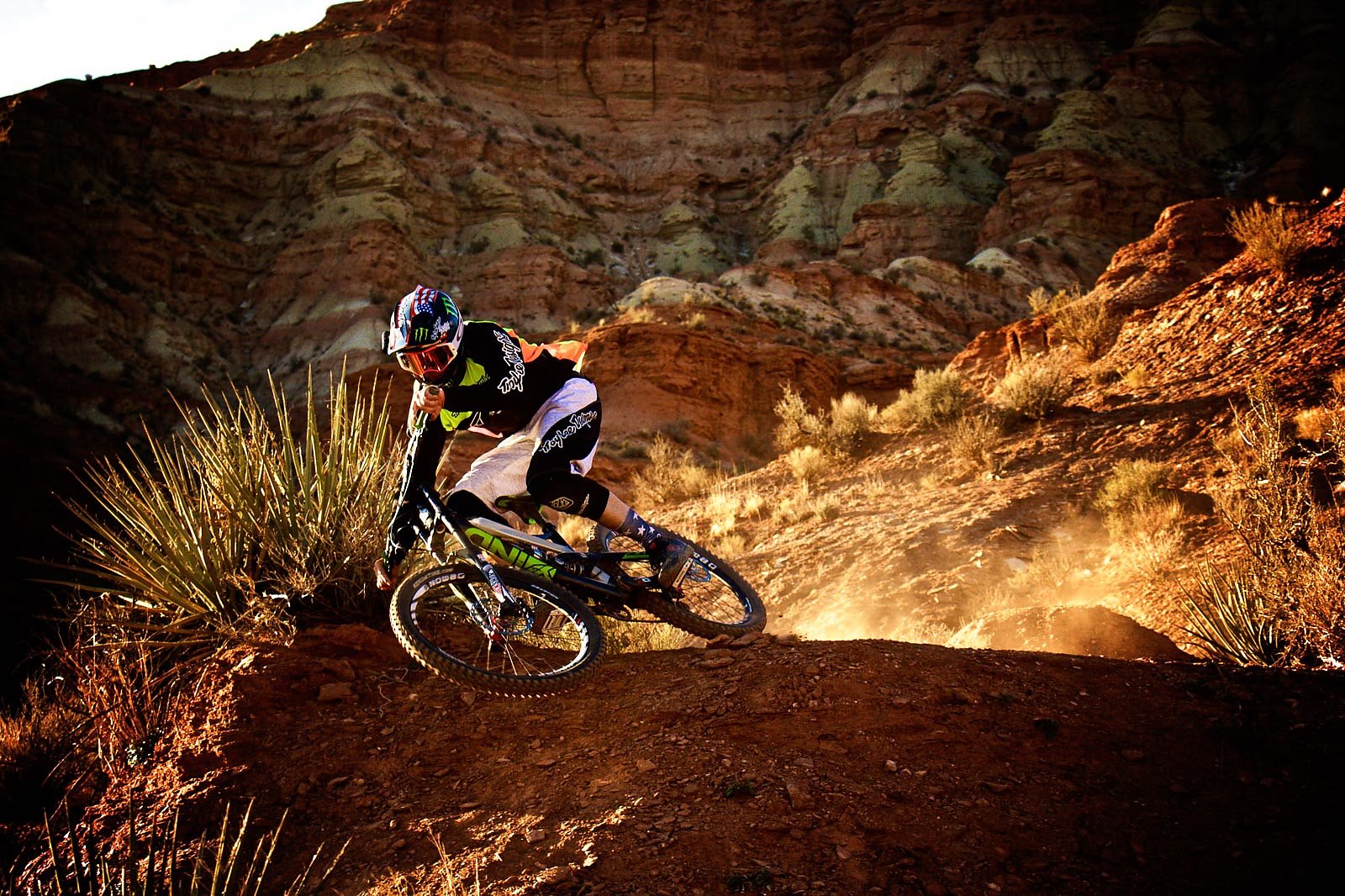
The amount of legends that are in this movie is pretty astounding, why was it important to you to make sure they were involved?
There’s certainly more than one reason for those people being included in the movie, but for the most part they either directly influenced Cam’s career as a mentor, like Voreis, or peripherally, like Carter and Palmer. It was important for me to show where Zink’s influences came from, and the impact those people had on the sport, but in doing so also explained the relevance of those people interviewed in the movie, should one not be familiar with the sport. It was like a quick history lesson in the sport while simultaneously showing their impact on Zink.
Was there anyone you really wanted to interview, but didn't have the opportunity?
With the movie bookended by two Red Bull Rampages, plus the Mammoth flip event in the movie, that’s already a lot of content. So, I had to be precise with the amount of dialogue and background storytelling in between those events to avoid a 5-hour long movie. Cam and I put a lot of time into developing the interviewee list, and I also added a few relevant surprises to the mix.
The only person I wasn’t able to interview, but had on my original list was Danny Way. Given his career arc and accomplishments are on par with Zink’s. With both Way and Zink being Monster Energy athletes, I thought the energy drink company could help me reach Way. However, Monster never returned my calls or emails when I asked for help contacting him. I had to move forward, so I decided on incorporating Travis Pastrana instead. His career parallels Zink’s as well, because Travis started as a successful motocross racer before experimenting and ultimately moving into the freestyle genre full-time. Travis was very generous with his time and gave great insight for the movie.
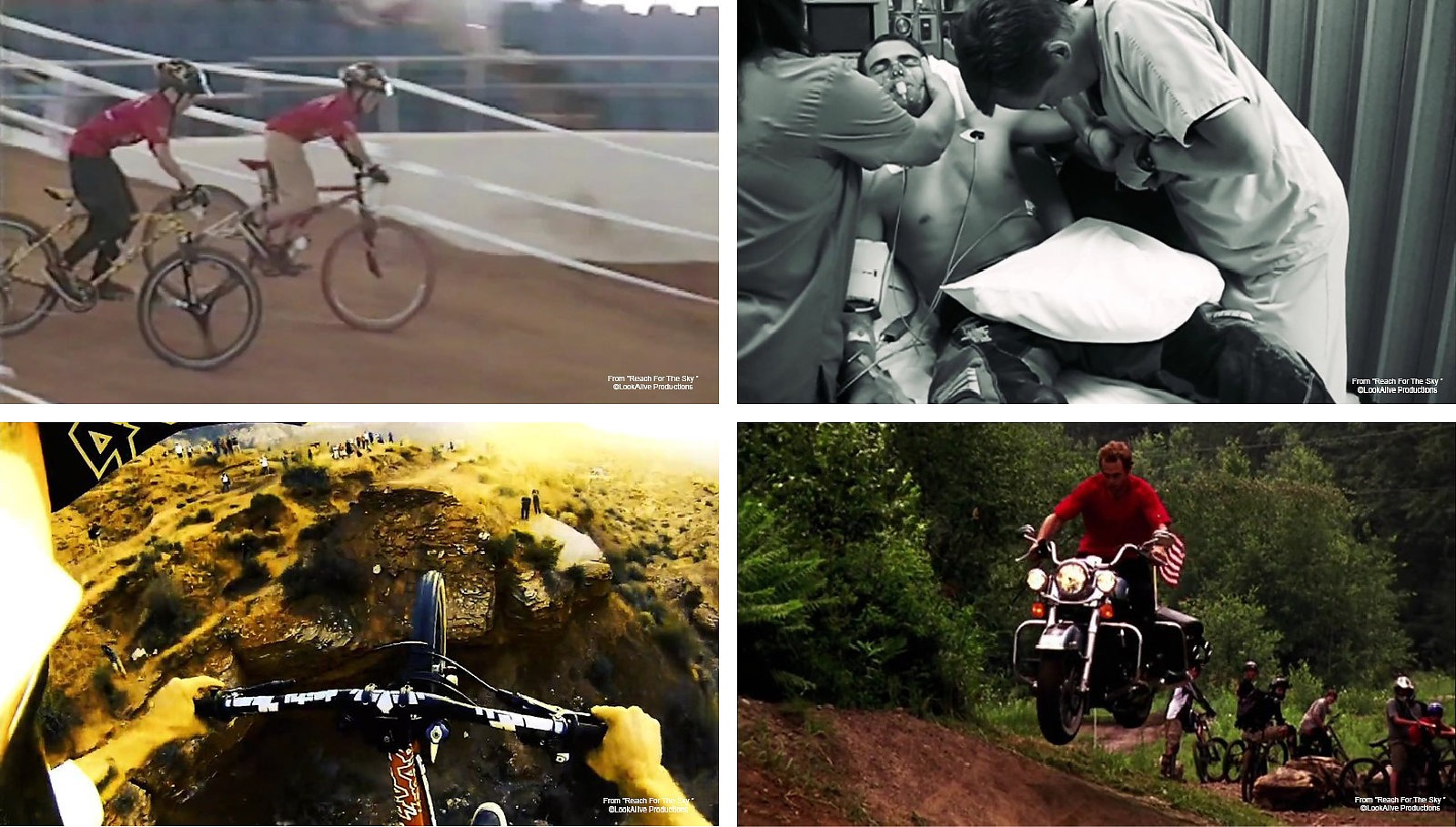
Both Kirt Voreis and Eric Carter speak their mind on the realities of Rampage. What are your feelings on the event and pressure from the media?
This is all perspective, really. I’m sure if some person only plays golf, they might think cross-country mountain biking looks very dangerous. The reality is, Rampage is one of the only events where a person can become a near household name from doing well in it—for better or worse. No one is making riders enter that extremely dangerous contest, and they don’t get paid much at all for what they do. I would like to see the riders hold out and demand more prize money to help reward the risk. I could be wrong, but believe the Street League skaters did a similar protest awhile back and they ended up receiving a much higher prize purse.
Do you think this documentary might have been even more of a driving force for Cam over the course of its filming?
Cam’s very motivated on his own, and of course he wanted to movie to turn out well, but I don’t believe making it really influenced much of his life. In fact, at the events in the movie I really left him alone and filmed mostly from a fly on the wall perspective, because I didn’t want to interfere with all of the high-stress moments already on his hands.
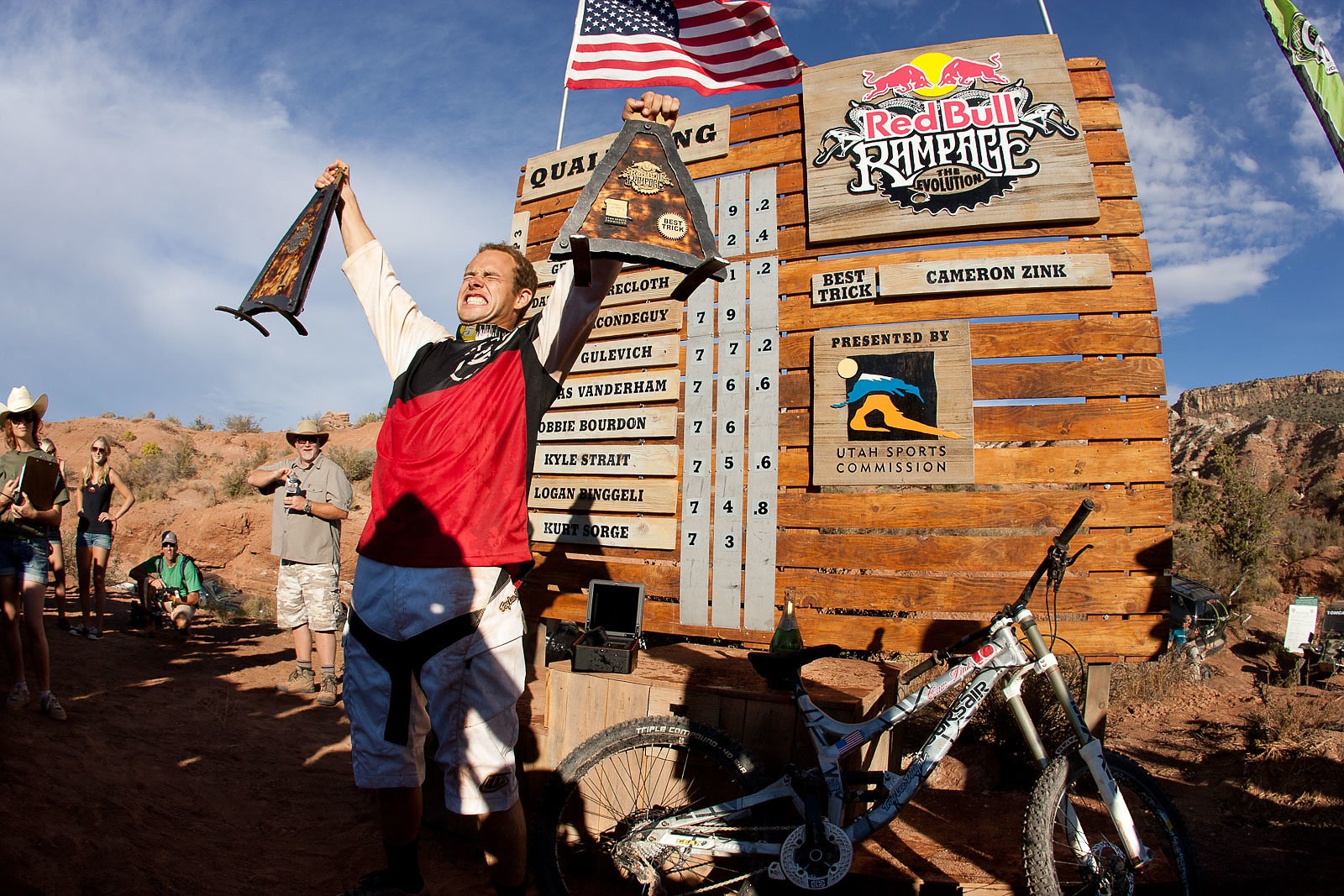
Is it a tough balance being someone whose job it is to document things like a world record backflip or Rampage and also a friend of someone who is putting their life on the line for the sport?
I’ve been a racer and photographer for many many years, and I’ve shot countless photos of my friends racing. However, I’ve never been worried for their lives. Watching Cam repeatedly go huge of drops or set world-record flips is certainly tougher through the camera lens, then someone racing against the clock. When he landed the massive 360 at the 2014 Red Bull Rampage for the second time, I think I exhaled for the first time in two years.
What were some of the challenges you had to overcome while filming? Any good lessons learned?
It was a very lean production and I only really worked with people I trusted could do a good job. There were a few instances where I had to completely change how I planned to shoot a situation or interview based on circumstances out of my control, which could lead to unforeseen sound or lighting issues. I learned to plan better for unexpected moments like this.
Any projects we should keep an eye out for in the future?
At the moment, I’m in the pre-production planning stages for a film on Kirt Voreis. This is a project I actually wanted to do years ago after finishing “Downhill Speed.” He’s an incredible person, and a rider who never got the attention or recognition he deserved in his career. Not to mention, as you saw in the Zink movie what a great storyteller Kirt is. His life story is unbelievable, and I hope we can get the pieces in place to start shooting this spring.
If you have yet to see Reach for the Sky, you can find it on nearly every online platform (iTunes, Google Play…) and watch the trailer at the movie’s official website www.camzinkreachforthesky.com
